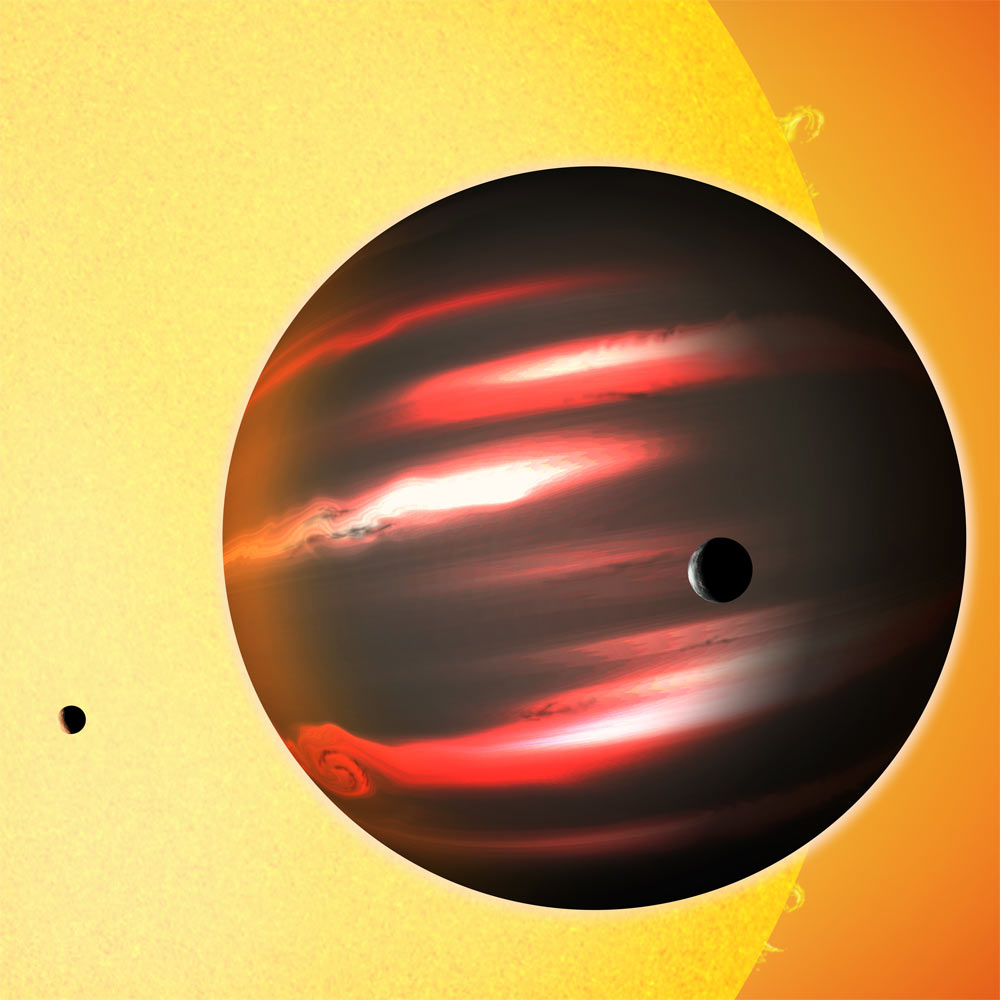
If you've ever wanted to catch a glimpse of a distant alien world, here's your chance.
TrES-2b, a planet nicknamed "Dark Knight" because it reflects so little light, will cross the face of its host star Saturday (June 27) in a "transit" captured by the online Slooh Community Observatory. You can watch the free event — the first-ever live public observation of an exoplanet, according to Slooh representatives — live at 8 p.m. EDT Saturday (0000 GMT Sunday) at the Slooh website: www.slooh.com.
You can also watch the exoplanet webcast on Space.com, courtesy of Slooh. The show, a collaboration involving Slooh and the Institute of Astrophysics of the Canary Islands, will feature live views from the Carlos Sánchez Telescope, one of the world's largest infrared scopes. It will also include commentary from Slooh hosts Bob Berman and Eric Edelman as well as exoplanet researcher Lisa Kaltenegger of Cornell University in Ithaca, New York and astronomer Seth Shostak of the SETI (Search for Extraterrestrial Intelligence) Institute in Mountain View, California. [The Strangest Alien Planets (Gallery)]
"Saturday evening, Dark Knight will begin to cross in front of its star 28 minutes into the live broadcast, and will end its journey exactly 1 hour and 30 minutes later," Slooh representatives said in a statement. "Slooh will cover the whole event live, from start to finish, giving viewers a front row seat to the excitement, science, and mystery involved in observing an alien planet."
TrES-2b, which lies about 750 light-years from Earth, won't be directly visible during the webcast. But viewers should be able to observe a slight dimming when the roughly Jupiter-size world crosses in front of its parent star (or stars, rather, since scientists think TrES-2b resides in a binary system) from Earth's perspective.
NASA's Kepler spacecraft, which has discovered more than half of the nearly 2,000 known exoplanets to date, employs this "transit method" to hunt for alien worlds, as do a number of other instruments. Indeed, TrES-2b was discovered via the transit method in 2006, by researchers studying observations from the Palomar Observatory in California and the Lowell Observatory in Arizona.

TrES-2b is a "hot Jupiter," a gas giant that orbits extremely close to its parent star. But this planet doesn’t blaze with a bright, fiery glow.
Get the Space.com Newsletter
Breaking space news, the latest updates on rocket launches, skywatching events and more!
"Dark Knight is the darkest exoplanet yet discovered, darker than coal or even black acrylic paint, reflecting just 1 percent of the light that falls on it," Slooh representatives wrote in another statement about the upcoming transit webcast. (Scientists aren't sure why TrES-2b is so dark.)
On Saturday, you can watch this dark, mysterious world gobble up a little bit of starlight.
Follow Mike Wall on Twitter @michaeldwall and Google+. Follow us @Spacedotcom, Facebook or Google+. Originally published on Space.com.
Join our Space Forums to keep talking space on the latest missions, night sky and more! And if you have a news tip, correction or comment, let us know at: community@space.com.

Michael Wall is a Senior Space Writer with Space.com and joined the team in 2010. He primarily covers exoplanets, spaceflight and military space, but has been known to dabble in the space art beat. His book about the search for alien life, "Out There," was published on Nov. 13, 2018. Before becoming a science writer, Michael worked as a herpetologist and wildlife biologist. He has a Ph.D. in evolutionary biology from the University of Sydney, Australia, a bachelor's degree from the University of Arizona, and a graduate certificate in science writing from the University of California, Santa Cruz. To find out what his latest project is, you can follow Michael on Twitter.